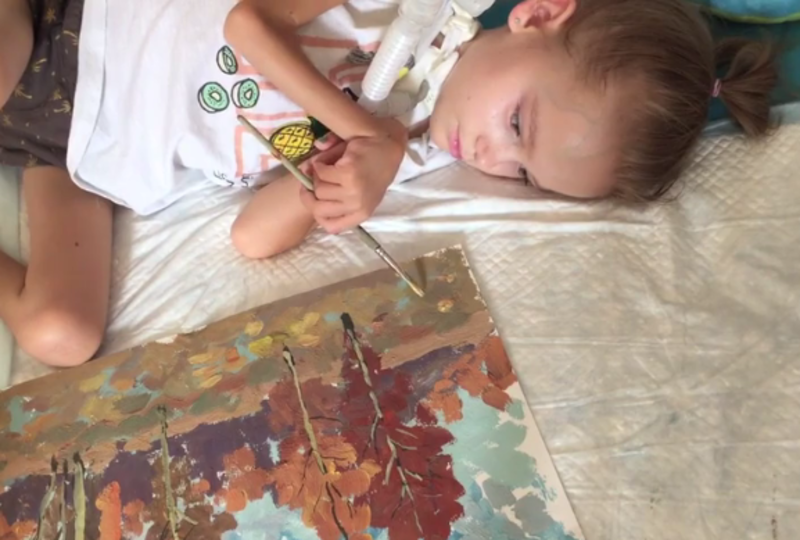Amazing Girl With Muscular Dystrophy Expresses Creativity
Amazing Girl With Muscular Dystrophy Expresses Creativity
Photo: Ekaterina “Kate” Borodulkina. Source: https://www.facebook.com/ekaterina.borodulkina/videos_by
Muscular dystrophy is a genetic disorder that gradually weakens the muscles that help the body move, thus deteriorating a person’s mobile ability. Recognized as an inherited condition, those diagnosed with MD have abnormal genes that interfere with the production of proteins important to the development of healthy muscle. Muscular dystrophy appears in several forms and is more commonly seen in boys than in girls.
Muscular dystrophy affects roughly 20,000 children each year. It progressively weakens the muscles, so those who are affected by it — babies, children, teenagers, and even adults — gradually lose their ability to do the things normal people do, like walking, talking, swallowing, and sitting normally.
Muscular dystrophy weakens the muscles, thus deteriorating a person’s ability to move. It is caused by the alteration of genes responsible for the production of a protein called dystrophin. Each year, roughly 20,000 children are affected by the condition, boys more so than girls. Gradually, the person loses the ability to perform daily activities.
Muscular dystrophy has several forms:
- Duchenne muscular dystrophy: A lack of dystrophin production causes this, which is the most common form of MD. Symptoms start to show between ages two and six.
- Becker muscular dystrophy: This is a less severe form whose symptoms appear late.
- Limb girdle muscular dystrophy: The symptoms of this type may arise early in childhood or even late in adulthood.
- Facioscapulohumeral muscular dystrophy: The symptoms of this form start showing in one’s teenage years or early adulthood.
- Emery-Dreifuss muscular dystrophy: Symptoms may start in late childhood or as late as 25 years of age.
- Myotonic muscular dystrophy: Symptoms start showing in the teen years.
- Congenital muscular dystrophy: Babies and children who show poor muscle tone and weak muscles are affected by this.
Ekaterina “Kate” Borodulkina
At the age of three months, Kate began to show symptoms of MD. Currently, she cannot hold her head high, talk, or raise her hand. Life can be tough due to her needs. Since she is unable to walk, she has to use a wheelchair. Kate undergoes therapy sessions to help manage and cope with her disease.
Kate has been creative ever since she was a kid. At the age of two, she started using colors and pencils, and she began to attend a children’s art school at age three, but her disease began to worsen when she was four. However, that didn’t stop her from continuing her drawing projects. Her parents and sister gave Kate nothing but support while she continued to practice her drawing skills. Despite her disease, she is still able to enjoy her life because of her determination and strong support system. Kate has been attending a normal school and even maintains a good scholastic record amazingly. Taking painting lessons allowed her to maximize her skills and realize she was good at art. This helped her to discover her talent and express herself. Painting has given Kate confidence as well as more of a reason to keep going. Even while lying on her side, she manages to paint. Because of her condition, Kate can’t always finish her paintings quickly, but over a period of time, she has produced several completed works.
For now, muscular dystrophy is incurable, but in the near future, a cure may not be impossible due to the advances in technology. Several breakthroughs have been made due to various research efforts in the medical field. A scientist at UT Southwestern medical center performed a study on the disease with mice. Through the use of a gene-editing technique, he was able to stop the progression of Duchenne muscular dystrophy in the animals. The University Basel in Switzerland, as well, conducted research in which they designed proteins that could help treat muscular dystrophy. All of this points the way towards greater hope for people with MD.
